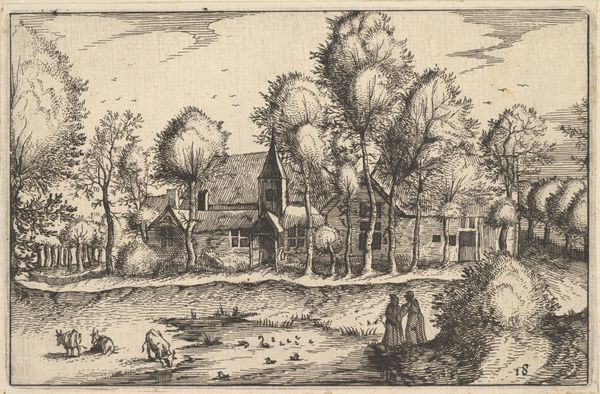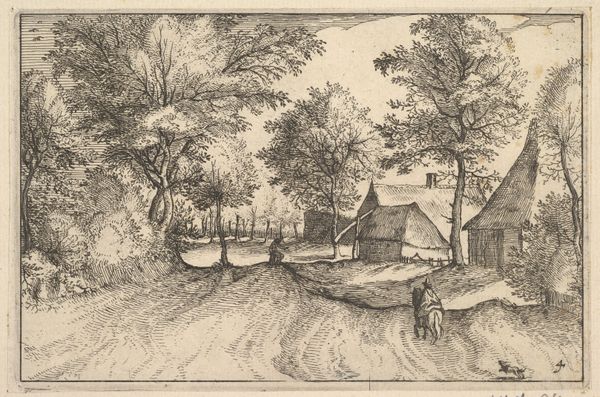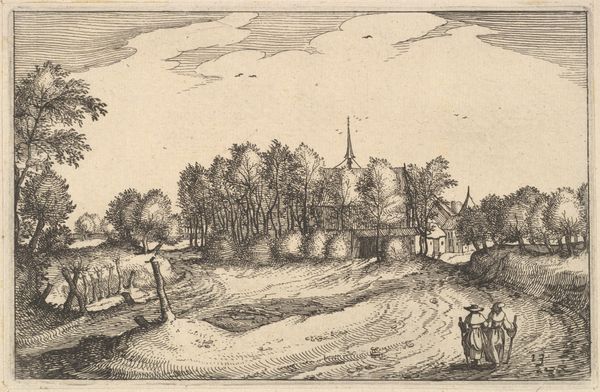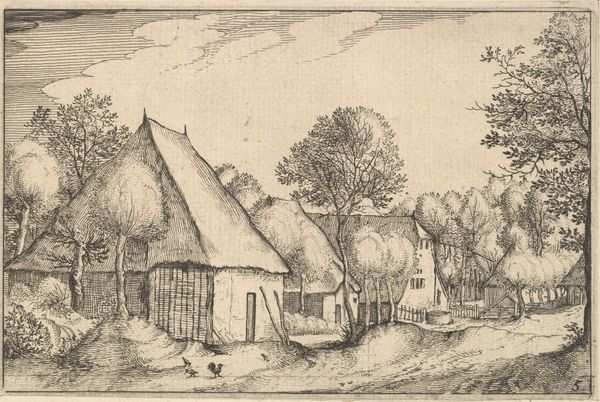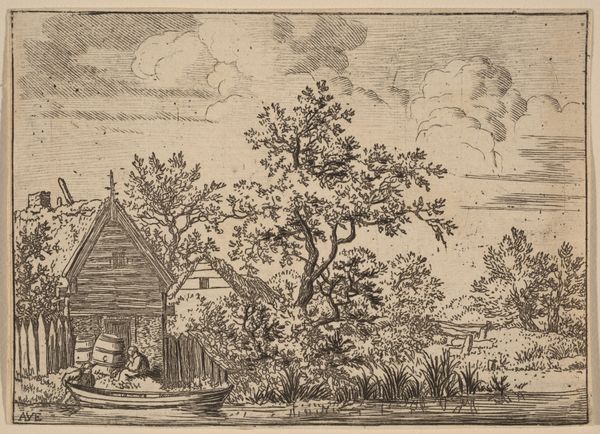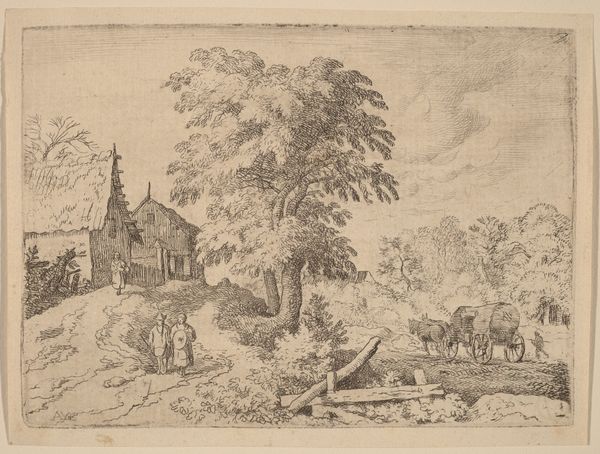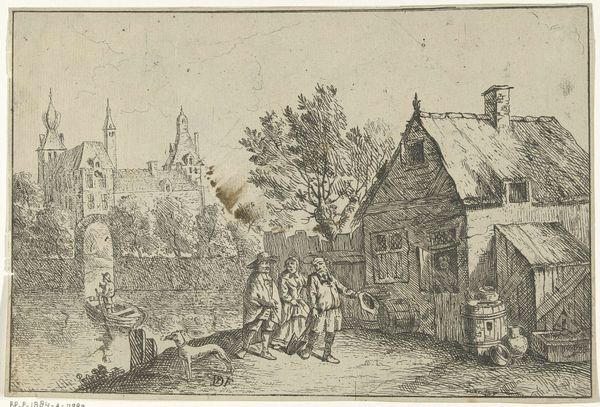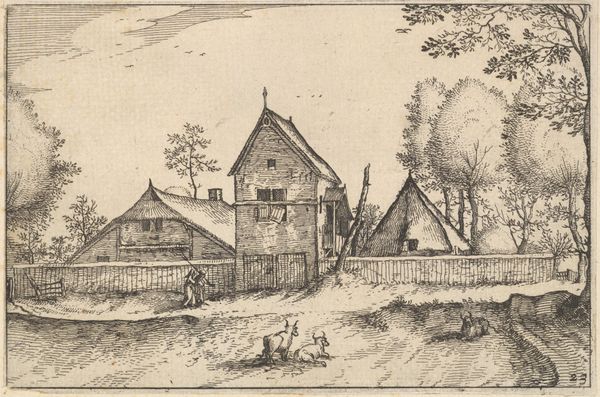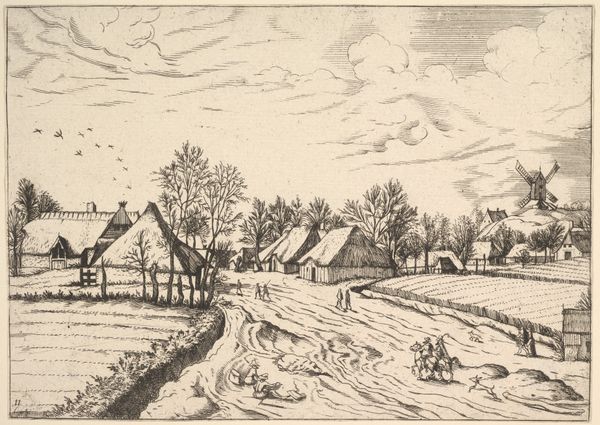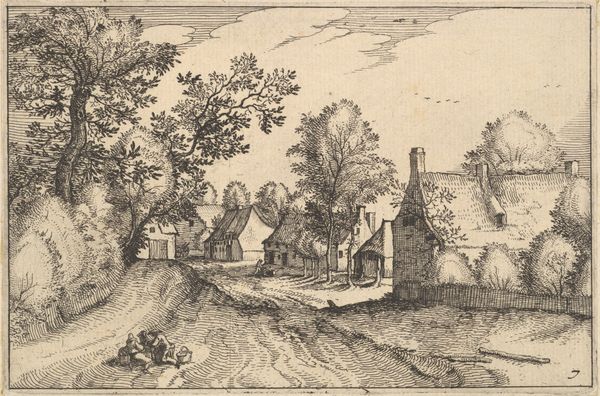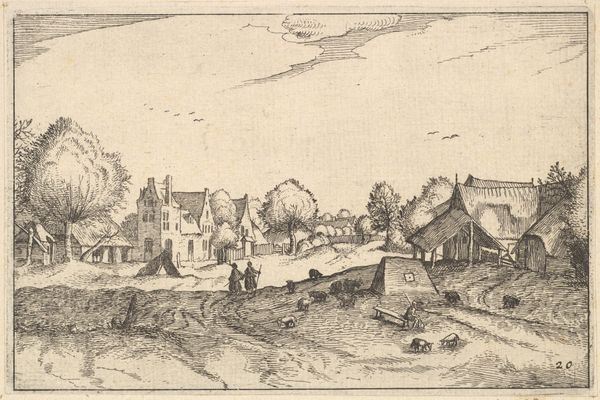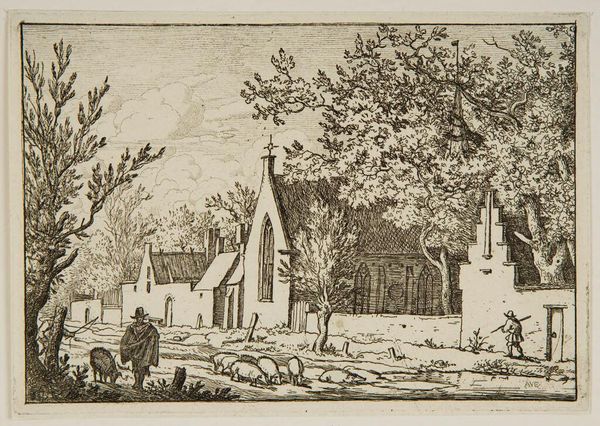
print, etching
#
dutch-golden-age
# print
#
etching
#
landscape
#
figuration
#
line
Copyright: National Gallery of Art: CC0 1.0
Editor: Here we have Allart van Everdingen's etching, "Swine Herd near a Chapel," dating from around 1645 to 1656. It has a beautifully rendered landscape feel, almost dreamlike due to the sepia-toned print. How do you interpret the juxtaposition of the mundane, represented by the swineherd and pigs, against the backdrop of the chapel? Curator: The image speaks volumes about the sacred and the profane coexisting within the human experience. Notice how the chapel, with its aspiration towards the heavens, doesn't overshadow the earthly reality of the swineherd. What do you think Everdingen is trying to tell us about faith and daily life in 17th-century Netherlands? Editor: Perhaps it's a commentary on the everyday nature of faith, that it exists even in the most commonplace settings? It feels very integrated, not separate. Curator: Precisely! The pig, an animal often associated with base instincts, is brought into the same visual plane as the chapel, suggesting a synthesis. And, look closely – the man guarding the pigs and the other figure further back...consider them symbols representing labour or journeys, alongside religious architecture. It is not a stark division, but rather how cultural symbols evolve and mingle with the routines of the time. The etching method gives it an old-world texture too. Does that invoke anything for you? Editor: Yes, that’s fascinating! I hadn’t considered the cultural significance. It lends the image a sense of timelessness, yet it's firmly rooted in its own period. Thank you, this changes everything for me. Curator: The joy is in seeing the world afresh. Every line etched here is a window into a world that shaped our own.
Comments
No comments
Be the first to comment and join the conversation on the ultimate creative platform.

